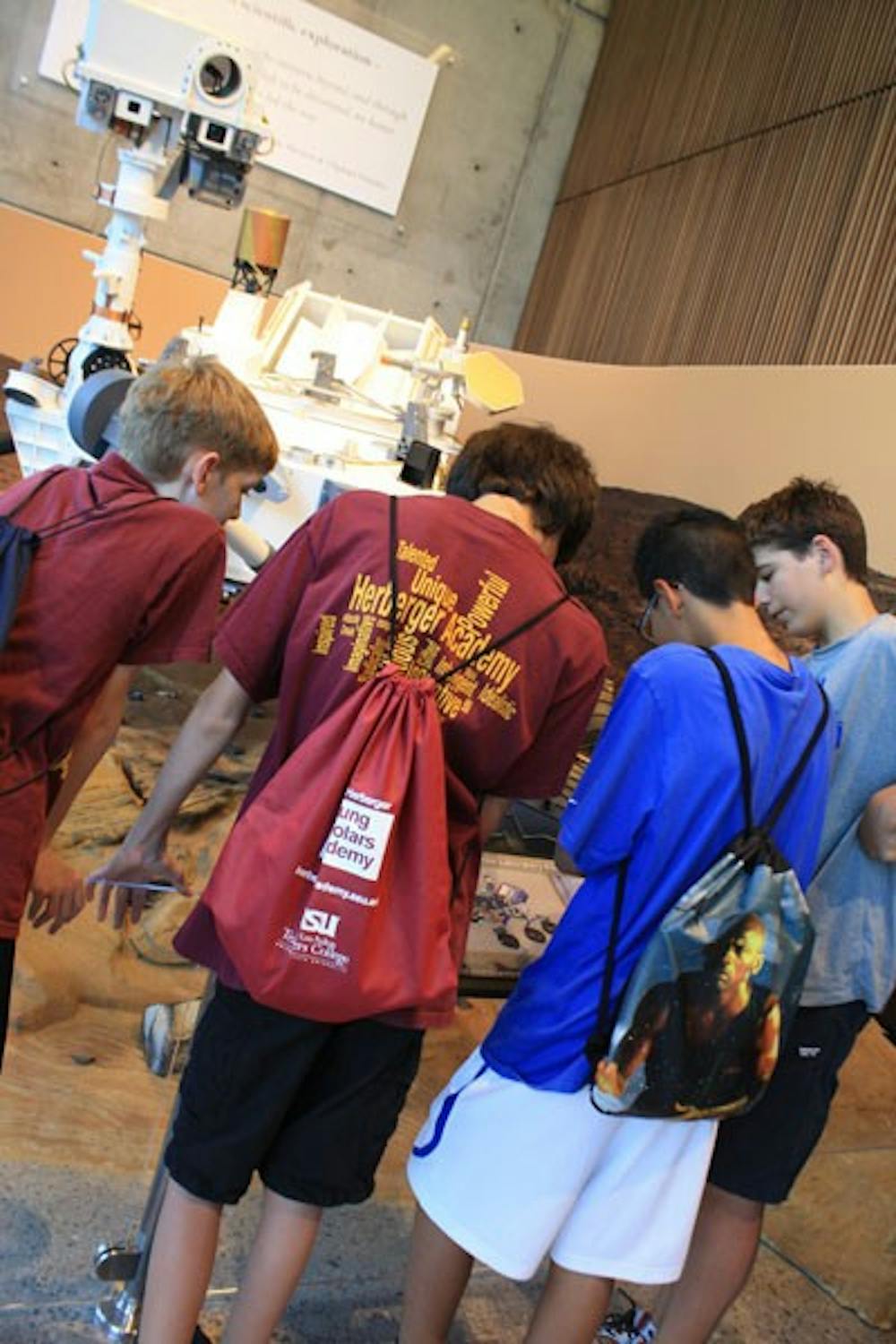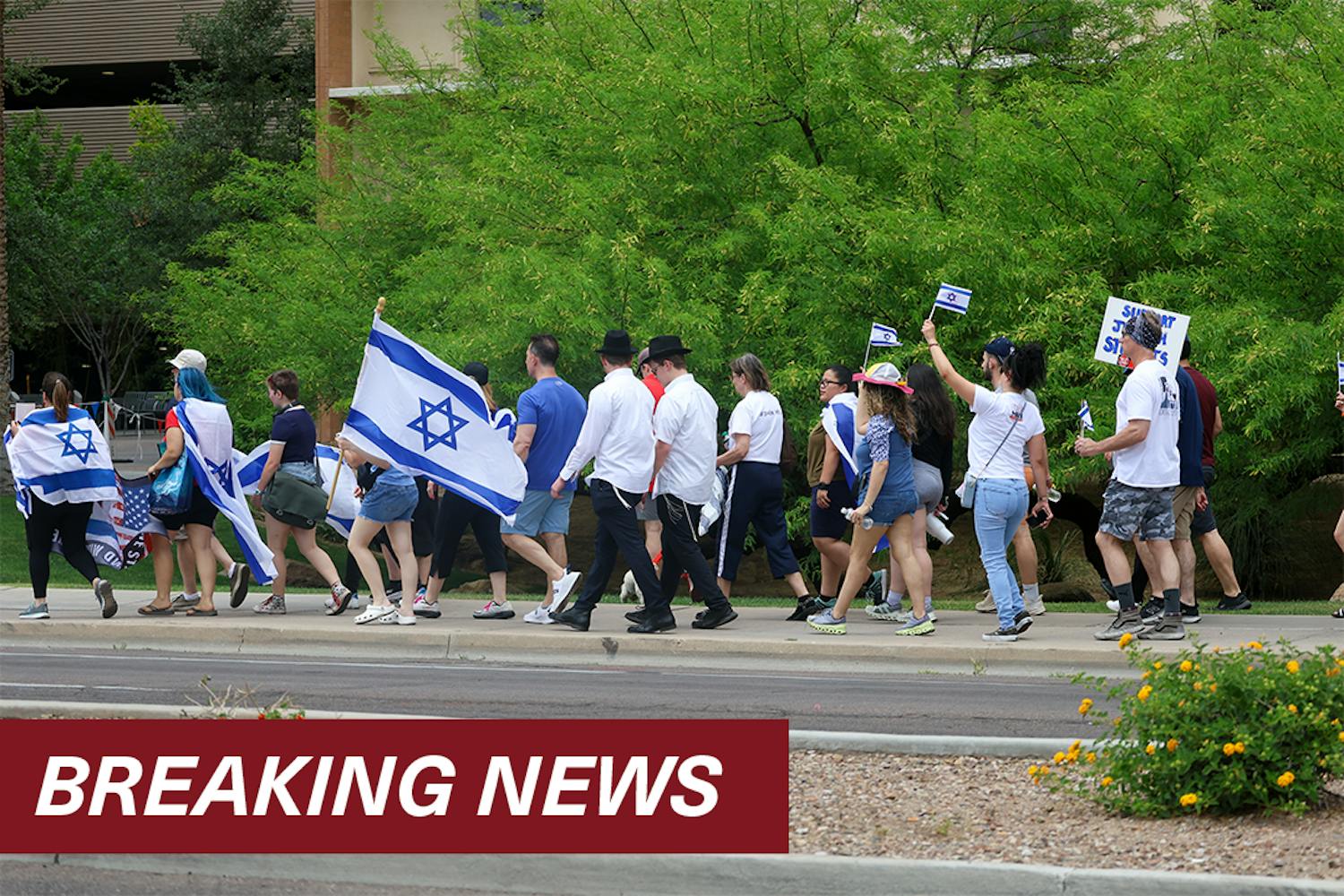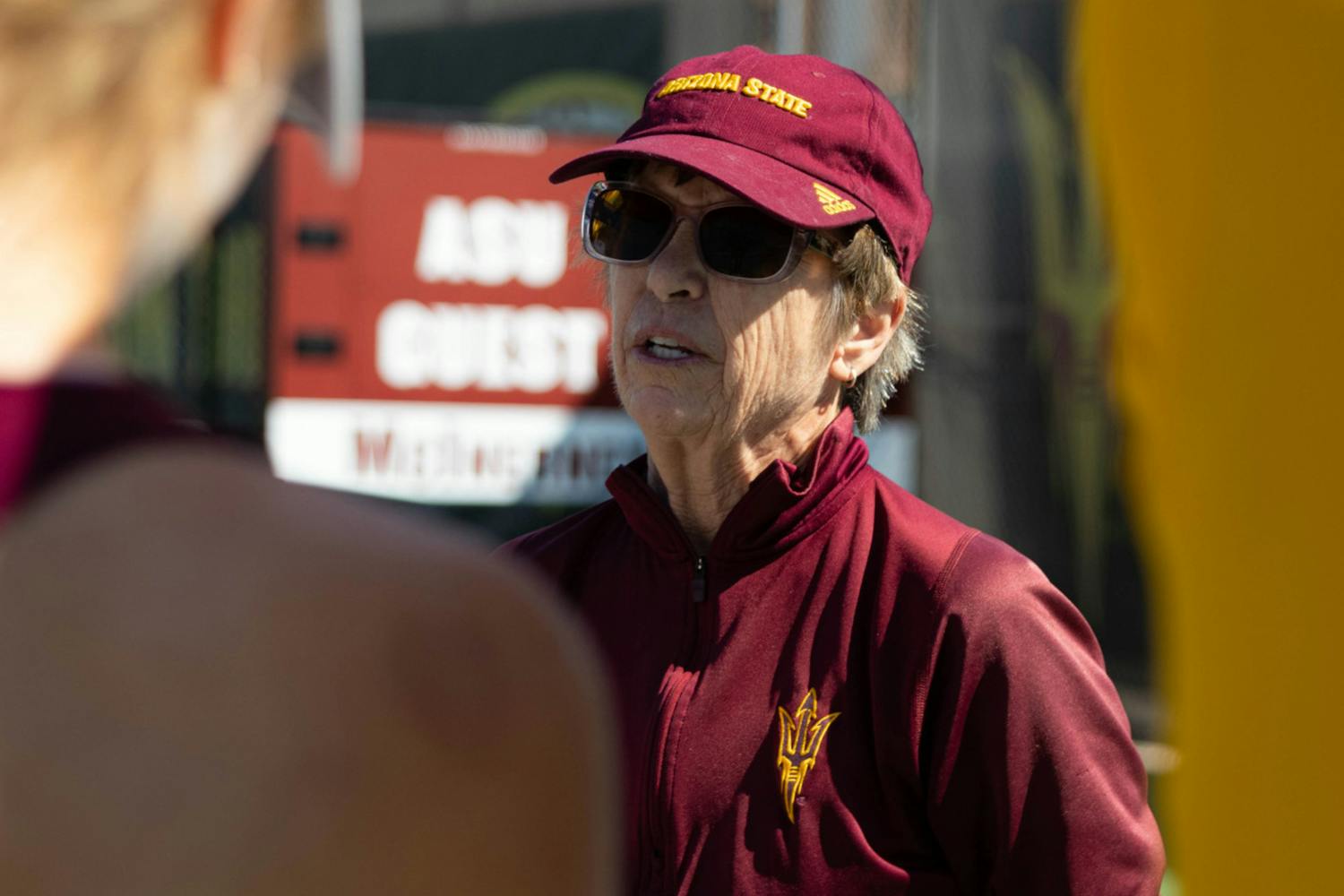 Young students from the West campus's Herberger Institute visited Interdisciplinary Science and Technology Building IV on its grand opening, beginning the tour by stopping at the life-size replica of the Mars Rover Curiosity. (Photo by Jessie Wardarski)
Young students from the West campus's Herberger Institute visited Interdisciplinary Science and Technology Building IV on its grand opening, beginning the tour by stopping at the life-size replica of the Mars Rover Curiosity. (Photo by Jessie Wardarski)ASU’s newly opened Interdisciplinary Science and Technology Building IV, now the largest building on the Tempe campus, will be the focal point for many of ASU’s scientific endeavors moving forward.
Dozens of students and faculty arrived to witness a ribbon-cutting ceremony Wednesday, which marked the official opening of the building.
Following the ceremony, School of Earth and Space Exploration director Kip Hodges led a VIP tour through ISTB 4.
“This is the opening of a whole new front for us. This building will allow us to expand our research,” Hodges said. “We are looking forward to the idea that students of all ages will be in here to interact with our displays and learn something new.”
Inside ISTB 4, there is a satellite mission control center for NASA’s ongoing Mars Curiosity operation.
Additionally, ISTB 4 contains 166 labs and is staffed by students and faculty from the School of Earth and Space Exploration as well as the Ira A. Fulton Schools of Engineering.
For speeches and sermons, students can now gather in the Marston Exploration Theater located on the first floor of ISTB 4.
The Magic Planet feature, also located on the first floor, is capable of projecting planetary surfaces on a large round sphere. The sphere can be used to illustrate the surface of the Earth, sun and the moon.
Observers use an attached control panel to learn about the various aspects of the planet they have selected.
Psychological science senior Stephanie Miller volunteered at the opening as a guide and helped attendees navigate the large first level.
“We can do almost anything with the Magic Planet,” Miller said. “We can look at weather forecasts or solar flares erupting from the surface of the sun.”
On the third floor student lounge, the carpet, referred to as the “crater carpet,” is a montage made up of several dozen images pieced together from photos taken of craters on the moon and Mars.
ASU alumnus Jim Crowell had been part of the Lunar Reconnaissance Orbiter Camera team that was tasked with choosing the crater images that would eventually comprise the carpet.
“We’re very proud of our crater carpet,” Crowell said. “When I was still working at L-ROC, we were asked to compile the best images. We all got together and submitted our favorite.”
Reach the reporter at mjgordo1@asu.edu




